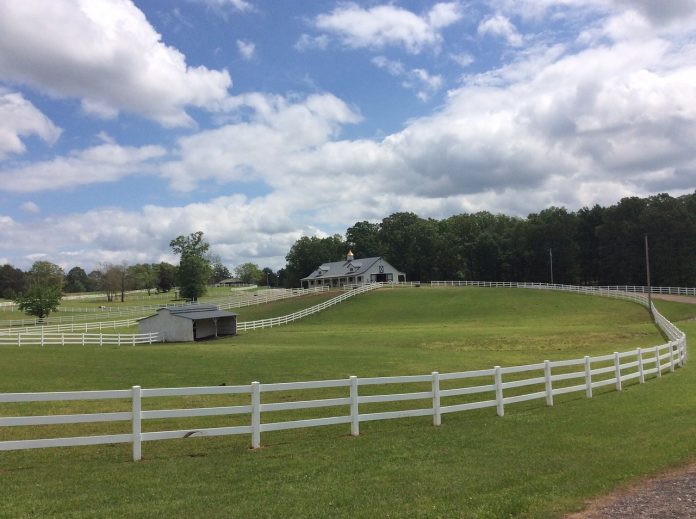It’s spring and graziers’ thoughts are turning to pasture improvement. This is the time of the year I get phone calls from livestock owners who want to know what they should plant to improve their pasture.
Often, I hear stories of how disappointed they have been with their pasture. The pasture doesn’t produce enough forage for their livestock, weeds are moving in, pasture quality is decreasing, the pasture seeding they tried a few years ago didn’t last; they must have planted the wrong thing.
Usually the caller is certain that if they could just get the right recommendation for what pasture species or plant mix to plant, their pasture would improve.
Unfortunately, all of these pasture conditions are symptoms of a management problem that no planting recommendation, except one, is going to help correct.
Aha! you are thinking, I knew it! There is a silver bullet that will give me better pastures. What is the plant and where do I purchase it?
Here’s the catch; it is not a plant species. My planting recommendation is to plant fence posts. What I mean, of course, when I say to plant fence posts, is that the number of pasture divisions should be increased.
Plant growth
Grazing management is all about understanding pasture plant growth and how to use livestock as a tool. The essential principles are to avoid overgrazing the grass plant and to provide a rest period that allows the plant to regrow to a target grazing height.
When a grass plant is grazed or mowed, regrowth can come from mobilizing root reserves, meristematic cell division at the base of leaf blades, or possibly some combination of the two.
Leaving some leaf blades on the plant allows the plant to continue to “harvest” sunlight with photosynthesis and power the regrowth with no to very little need to draw upon carbohydrate root reserves. In addition, research has shown that leaving 50 percent or more of the leaf area on the plant after a grazing pass will only minimally reduce the plant root system, so the plant recovers faster compared to a plant that is grazed more severely.
What does all of this have to do with planting fence posts to create pasture divisions? Let’s consider an example.
Grazier A rotates between two paddock divisions. Livestock are turned into the first pasture paddock when grass is 6 to 8 inches tall.
Move the livestock
Grazier A’s goals are to graze the grass down to 3.5 inches and move the livestock out of the paddock until the grass regrows to 6 to 8 inches. Despite these good intentions and knowledge of what should be done, Grazier A runs into problems.
In the spring, grass is growing fast and if livestock are not moved within a two- to three-day period, they begin to go back and graze the newly regrowing plants. Grazier A knows plants need more time to recover and should not be grazed yet, so livestock are moved into paddock number two.
However, two to three days later, plants in that paddock are starting to regrow and the livestock are again going back and eating that new regrowth before the plant is fully recovered.
Grazier A needs 15 to 18 days to allow the grass plants to recover and regrow from a 3.5-inch height to a 6- to 8-inch height, but can’t make that happen with only two pasture divisions. Very soon some of the pasture area is overgrazed while other parts of the pasture have overmature, unpalatable grass.
Grazier B has six pasture paddocks. In the spring, when the grass is growing fast, livestock are moved every three days to a new paddock. Every 15 days they are back in a paddock with 8-inch tall grass.
Rest period
Grazier B does pretty well protecting his pasture from overgrazing and providing an adequate rest period until the summer months. At that point the rotation is not working because the grass has only regrown to a 5-inch height in 15 days.
A longer rest period is needed, but the grass is already grazed down to 3.5 inches in the previous paddock. By the end of the season, all of the paddocks are overgrazed and some supplemental hay needs to be fed.
Both of these grazing situations can benefit from increasing the number of pasture divisions.
How many paddocks are needed?
In our “Pasture for Profit” grazing schools, the formula we share with participants is: days of rest needed, divided by number of grazing days plus 1.
The days of rest needed is determined by how long it takes the pasture to grow back to a target grazing height, generally 8 to 10 inches for many of our cool season pastures. The number of grazing days in the paddock is determined by how long it takes the livestock to graze down the pasture to the target grazing height.
Remember, we want to leave at least 50 percent of the leaf area on the plant so typically that grazed height should be 3.5 to 4 inches or more. For example, in the spring of the year if grass is growing fast the rest period may be 15 to 18 days.
If paddocks are grazed for three days, then the number of pasture divisions needed is 18/3+ 1 = 7.
In the summer, as growth slows down more time is needed for grass to regrow. The rest period might be 35 days. If our grazing days/paddock is the same, then the number of pasture paddocks required is 35/3 + 1 = 12 to 13 paddocks.
Pasture divisions allow the grazier to use their knowledge about plant growth and apply that knowledge to make management decisions about when and where to move livestock. Until you have 10 or more pasture divisions, consider planting more fence posts before planting more seeds.












If I have a 35 acre pasture and divide it in 3 paddocks approximately how many head of cattle can I graze? I live in eastern kentucky